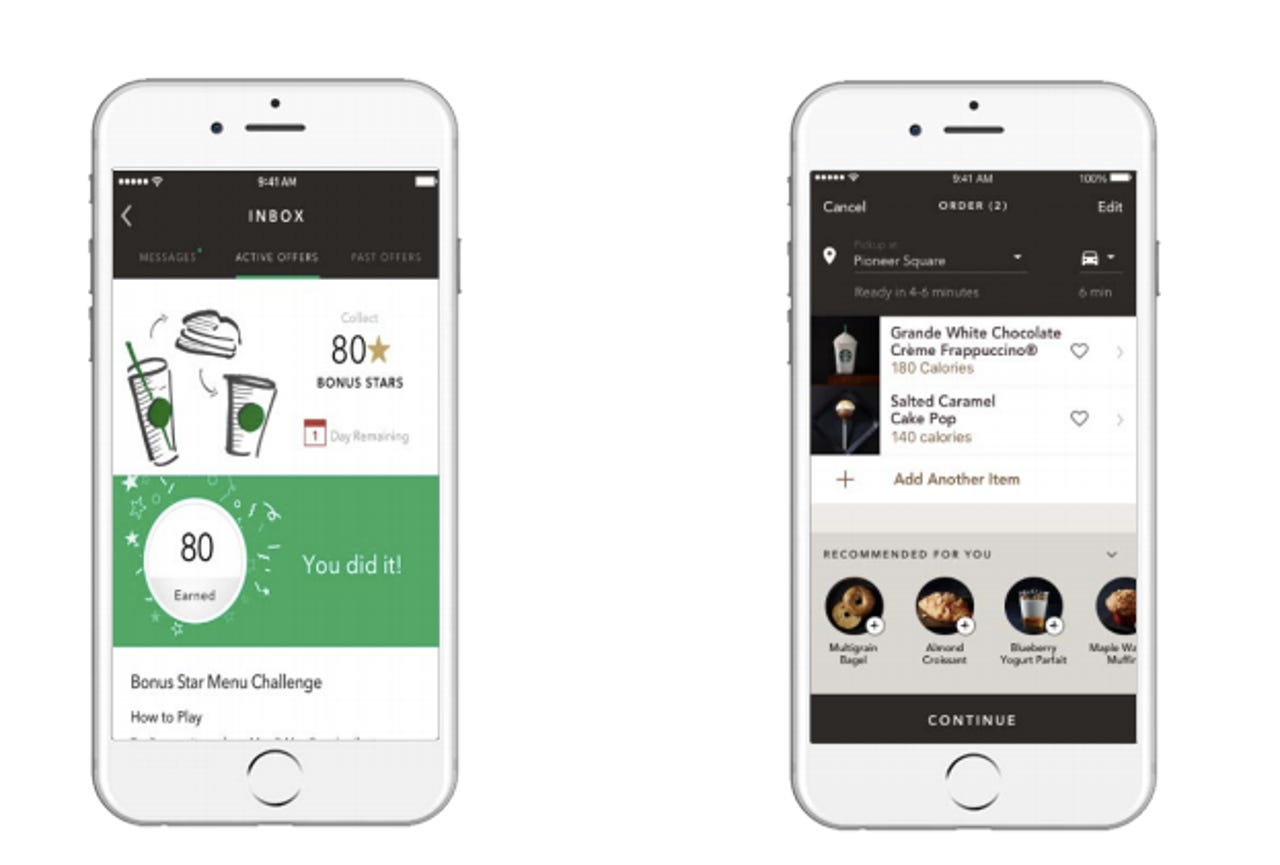Starbucks charts its digital future as CEO Schultz sets to depart


Screens from the Starbucks mobile app.
At its annual meeting with investors on December 7, Starbucks executives outlined a bevy of initiatives involving new store formats, expanded food offerings, and new premium coffee beverages -- but the other big story to come out of the coffee giant's corporate hobnobbing was how the company's use of technology has turned the brand into a digital innovation machine.
Featured
Starbucks, which has one of the largest loyalty card programs, has doubled down on its use of technology and mobile apps as a way to boost sales and increase service speed. The coffee and tea retailer adopted a digital strategy early on and has become an example in how to successfully use technology in a retail setting.
"Starbucks has been very successful in removing functional barriers and getting its digital and store operations team's to see the business from the customer's perspective," said Forrester principal analyst Nigel Fenwick. "They are a customer-obsessed company that uses digital capabilities as a means to create value for customers and thereby drive revenue growth."
Much of Starbucks' tech-innovation prowess is due to longtime Starbucks CEO Howard Schultz and a team he assembled in 2008 that put digital technologies at the forefront. Schultz announced last week that he planned to step down from his leadership position and hand the keys over to COO Kevin Johnson -- a move that, from a technology perspective, is promising.
Before joining Starbucks in 2015, Johnson spent 16 years as an executive at Microsoft, did a five-year stint as CEO of Juniper Networks and served on the National Security Telecommunication Advisory Committee under Presidents George W. Bush and Barack Obama.
With a technology industry veteran at the helm, Starbucks will set off on a journey focused less on convincing people to drink coffee and more about how to augment the customer experience and boost sales using tools like mobile order and pay and a digitized rewards program. These efforts are already in motion and lumped into what Starbucks refers to internally as its "digital flywheel," a concept representing the company's ecosystem of digital propositions for the customer.
"We look at digital not as a marketing channel, but as a foundational part of the customer experience at Starbucks," said Matt Ryan, SVP and chief strategy officer at Starbucks. "That's why we have a different track record with digital from so many other companies who just treat it as marketing. It is foundational to who we are and what we offer customers."
Over the past three years, Starbucks grew the contribution of the digital flywheel in its business from about 30 percent of North American revenues to now 38 percent, Ryan said. The number of Starbucks reward members increased from 5 million in 2013 to 12 million in 2016 and there's now roughly one out of three mobile paying customers using mobile order and pay.
Looking ahead, Starbucks chief technology officer Gerri Martin-Flickinger, the former Adobe CIO who joined Starbucks a year ago, plans to build on previous success and add new technologies that boost personal engagements digitally and anticipate customer behaviors.
"If we go back just one year ago today, what you would've seen at Starbucks was a marketing process that looked very similar to many retailers," Martin-Flickinger said Wednesday. "It was based on handcrafting email variants every week and then using those to communicate to our customers."
"Often there was a lag in data that we would have, because it was mostly done via spreadsheets," she continued. "And, frankly, that's a pretty common state of affairs for many organizations doing marketing today."
In a departure from traditional email marketing tactics, Starbucks recently moved to a real-time, AI-based personalization engine, which has increased the company's personalized email offers from around 30 variants a week to more than 400,000 variants a week. In October, Starbucks launched real-time offers in its mobile app, which Martin-Flickinger said created highly personalized, one-to-one offers for each customer.
"There are no variants; there are no predetermined algorithms around specific offers," she said. "It's actually a data-driven AI algorithm based on your own preferences, your own behavior, as well as behaviors we're trying to drive."
Taking AI a step further, Starbucks unveiled Wednesday its new My Starbucks Barista chatbot that lets customers place their orders via voice command or messaging interface.
Eventually, Ryan said Starbucks plans to expand the algorithms beyond email and mobile to launch personalized communications on more consumer-facing screens, potentially in-store screens and on drive-throughs.
"We have the ability now to take personal information and marry it to what gets delivered on a drive-through screen, for instance," Ryan said. "Or when there are other devices in our customers' hands -- for example, watches or anything that is connected, that has a screen -- we have the ability to personalize that based upon what we know about that customer."
For every enterprise trying to go digital, Starbucks easily serves as a case study on how to focus on the customer to reach that digital/physical nirvana. Overall the company isn't afraid to invest in new technologies that yield lasting, long-term returns, but there's always a consumer-facing challenge that it's trying to solve.
As a beverage brand, however, Starbucks' digital successes might not translate to other industries, so it's important for businesses to strategize with specific end-goals in mind.
"Starbucks is in the beverage game, with extremely unique footprints, where they can focus on what they do and do it well," said Brendan Witcher, principal analyst at Forrester. "The danger is that other retailers think what was right for Starbucks is right for them."